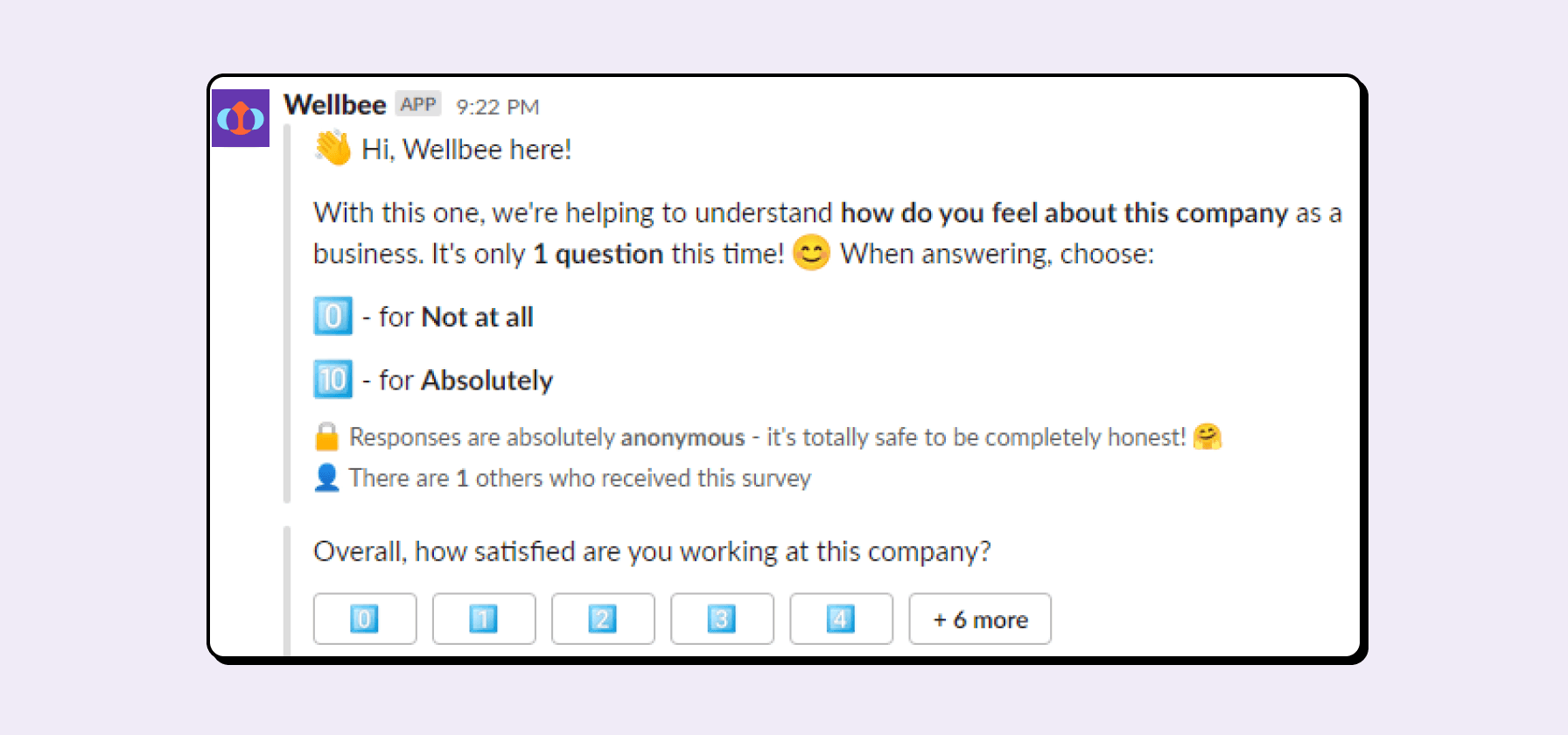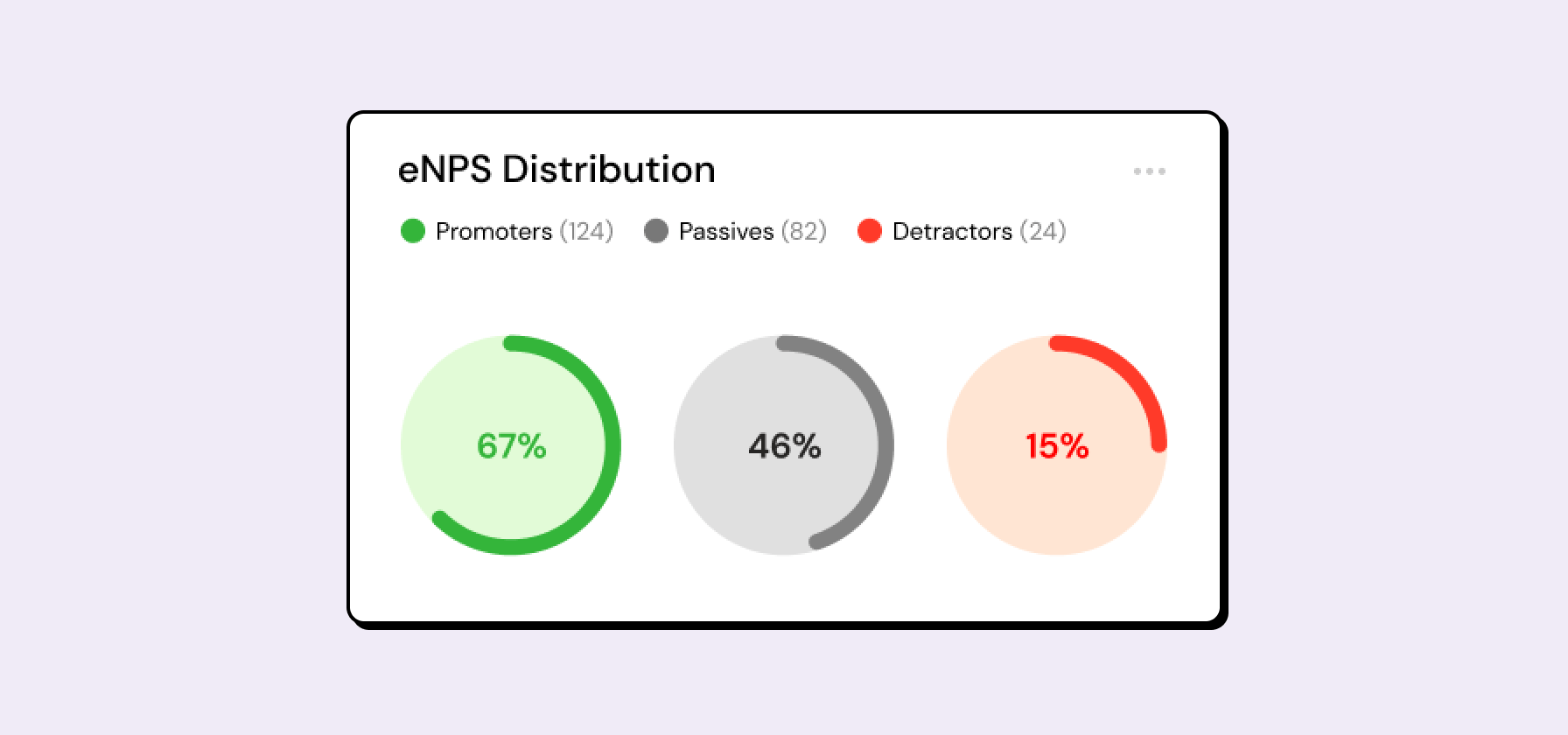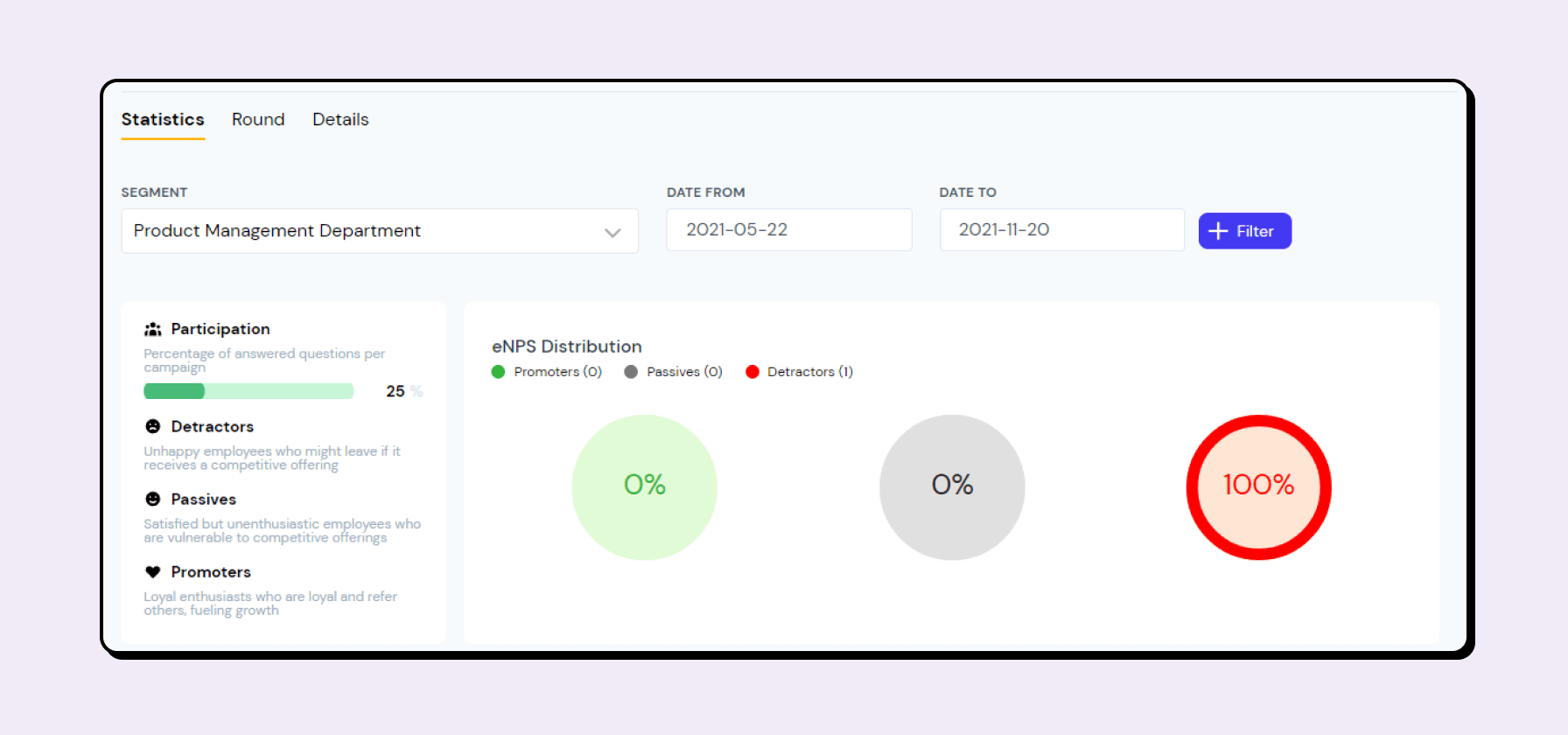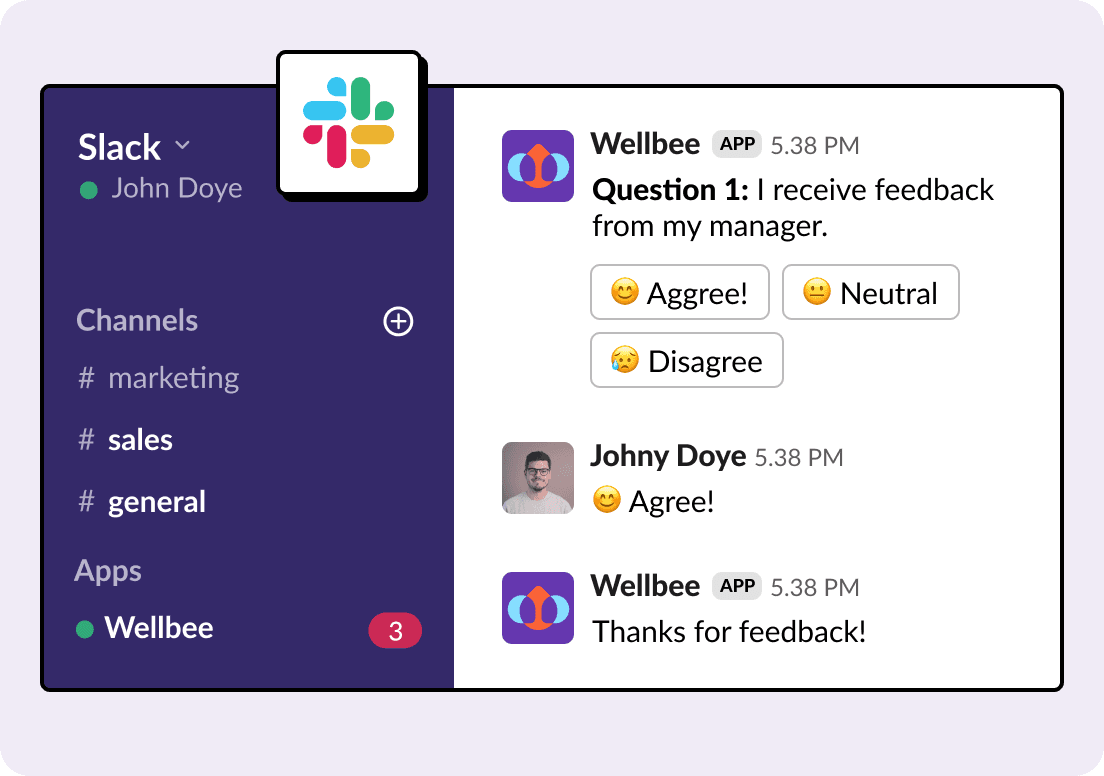What's Employee Net Promoter Score (eNPS)?
Employee Net Promoter Score (eNPS) is a concept based on a well-known customer Net Promoter Score (NPS) to measure employee loyalty. NPS was originally developed back in 2003 by Fred Reichheld (a partner at Bain & Company) and is simply a metric for effortlessly measuring the willingness of customers to recommend company's products or services to their friends, family, or peers.
Feel free to check out Bain & Company's website for free material on the Net Promoter Score.
eNPS, on the other hand, applies that same measurement to employees. It's a way to understand how willing your workers are to recommend their workplace to others (as well as products/services it offers, should you choose to gauge the product/service aspect within your eNPS surveys as well).
eNPS has become the golden standard within organizations that want to understand internal work climate better and it's exactly what you'll get - the insights you need to understand exactly what employees like and don't like about your organization. While it's not meant to be a complete way of measuring employee engagement, because of its simplicity, eNPS is an amazingly effective way to get started!
In essence, it asks you one simple, core question (and can include few additional ones to tackle willingness to stay within the company, as well as product/service recommendations):
On a scale of 0-10, how likely are you to recommend [company name] as a place to work?

How does eNPS Work and How to Calculate It
eNPS is simply the difference between your happiest and least happy employees.

People who give a score of 9 or 10 are called *promoters* - the ones who are advocating for the company.
Employees who provide a score of between 0 and 6 are considered *detractors* - those whose who are likely to reflect negatively about their workplace or the products/services it provides.
Those who give a 7 or 8 are called passives, and the eNPS formula does not take their scores into account:
eNPS = number of promoters - number of detractors / total number of respondents x 100
How to Use eNPS Effectively
When using eNPS you should always keep in mind that the score itself does not reveal the underlying factors that make people either promoters, passives or detractors.

As eNPS is recommended to be run once per month at most (since, in practice, eNPS scores do not fluctuate as much in the short term simply because of the fundamental nature of the questions asked for this metric), it is crucial to pair eNPS surveys along with super simple, more frequent engagement surveys.
This setup (eNPS + pulse surveys) will allow you to deep-dive into the actual drivers that make or break employees relationships, individual happiness and overall attitudes towards their workplace.
